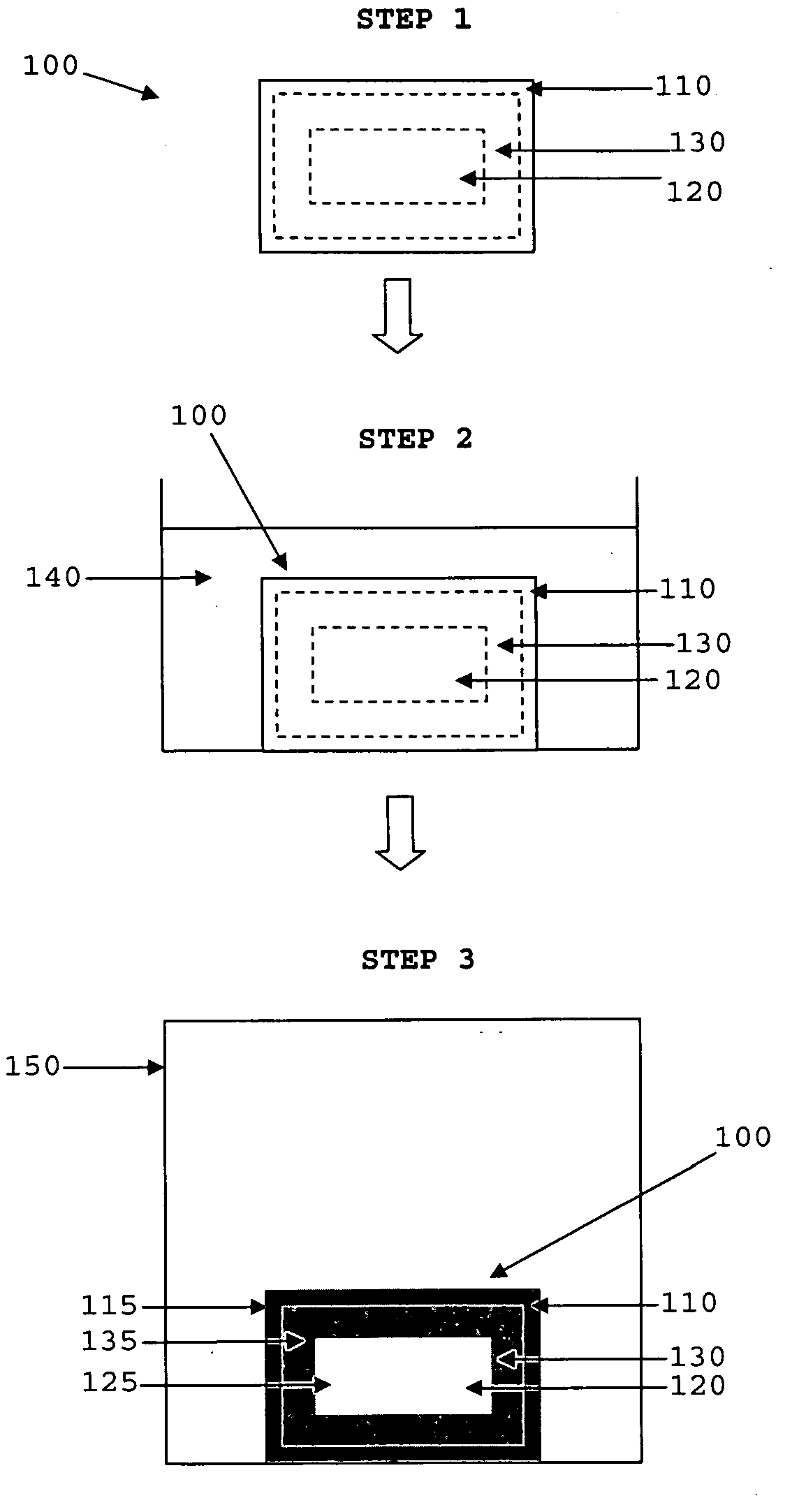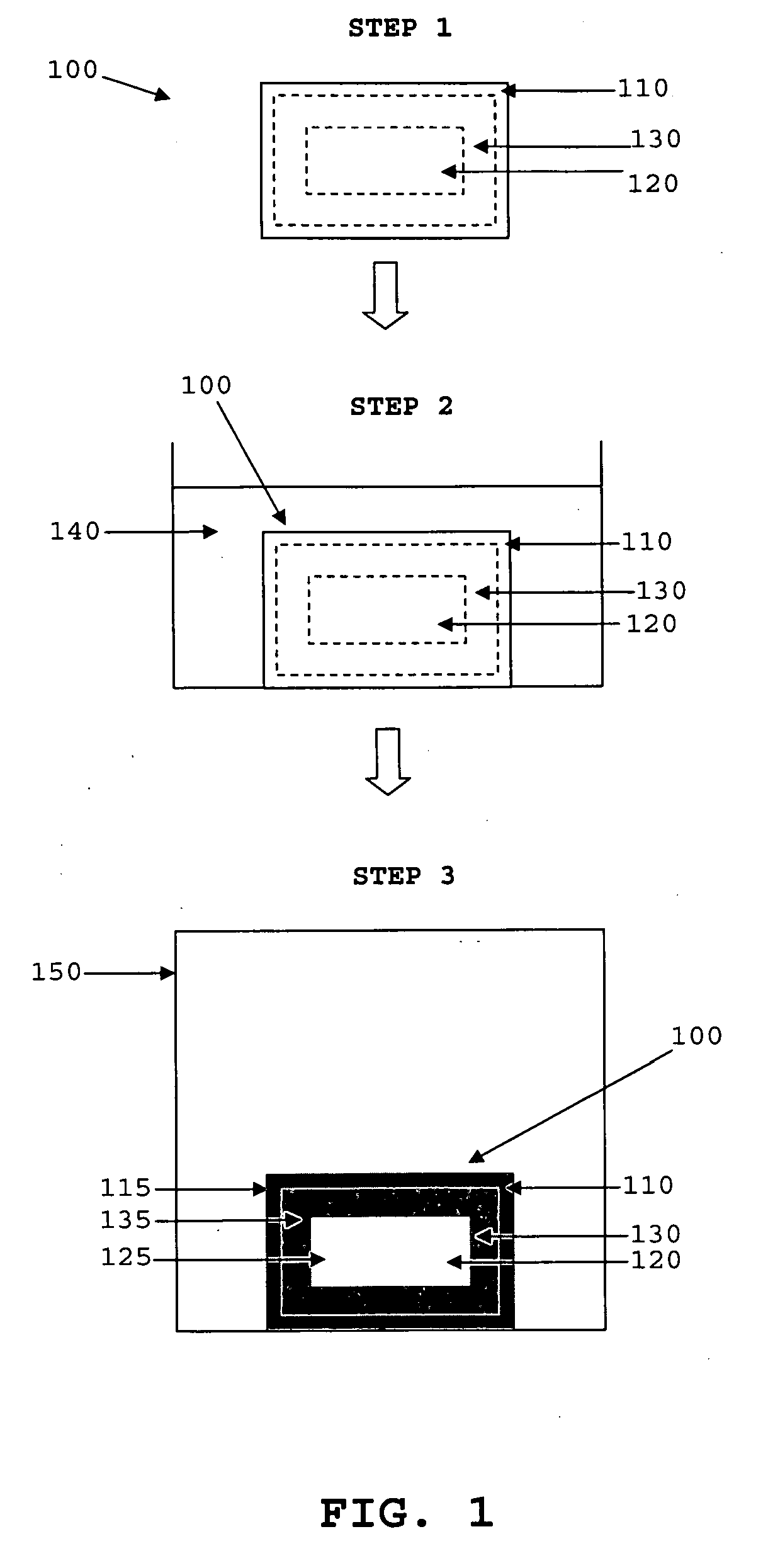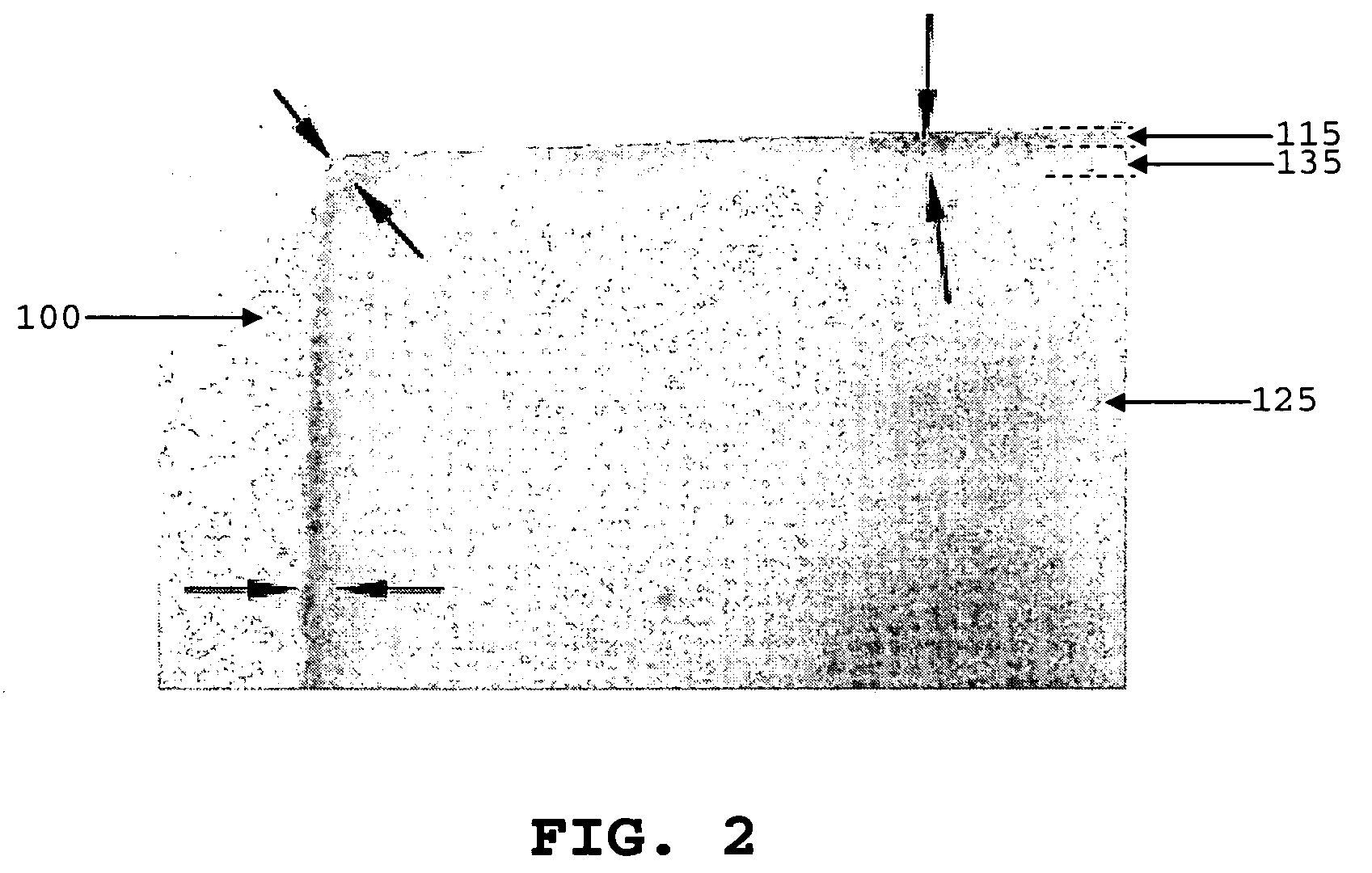Doped ceramic materials and methods of forming the same
- Summary
- Abstract
- Description
- Claims
- Application Information
AI Technical Summary
Benefits of technology
Problems solved by technology
Method used
Image
Examples
example 1
Method of Forming Cr2O3 doped Al2O3 material
[0150]FIG. 1 shows the method steps of forming Cr2O3 doped Al2O3 material.
[0151] In Step 1, a high sinterability Al2O3 (alumina) preform 100 having a first layer 110, a second layer 120 and a transitional layer 130 connecting the first layer 110 and the second layer 120 was provided. The first layer 110, the second layer 120 and the transitional layer 130 form an integral structure and do not exist as distinct separate layers. The high sinterability Al2O3 preform 100 was provided by slip casting a colloidal suspension of Al2O3 powder (average particle size 0.18 μm) into a mould to form a green body, and pre-firing the green body at 850° C. for 1 hour to form the high sinterability Al2O3 preform. The Al2O3 preform has a relative density of 64% and is sanded to rectangular-shaped preforms measuring 17 mm×17 mm×6 mm in dimension.
[0152] In Step 2, the Al2O3 preform was immersed in a saturated solution chromic acid 140 for 1 hour to attain a...
example 2
Comparison of Cr2O3 doped Al2O3 Materials Having Cr2O3 Concentrations of 0.0, 0.6, 1, 2 and 3.5 mol % in the First Layer
[0157] The method in Example 1 was repeated to form Cr2O3 doped Al2O3 materials having Cr2O3 concentrations of 0.6, 1, 2 and 3.5 mol % in the first layer.
[0158] Undoped Al2O3 material was provided by slip casting a colloidal suspension of Al2O3 powder (average particle size 0.18 μm into a mould to form a green body, and pre-firing the green body at 850° C. for 1 hour to form the Al2O3 preform. The Al2O3 preform is subsequently sintered under vacuum at a temperature of 1450° C. for 3 hours to form the undoped Al2O3 material.
[0159] Table 1 below tabulates the values of relative density, grain size, hardness and fracture toughness of the Cr2O3 doped Al2O3 material at Cr2O3 concentrations of 0.0, 0.6, 1, 2 and 3.5 mol % in the first layer.
TABLE 1Cr2O3content inFracturefirst layerRelativeGrain SizeHardnessToughness(mol %)Density(μm)(GPa)(M Pa m1 / 2)0.0>99.5%4.6 ± 1....
example 3
Tool Life of Cutting Tool Inserts Formed from Cr2O3 doped Al2O3 Material and Commercial White Alumina material [Al2O3 with 3-5 vol % ZrO2]
[0166] A cutting tool insert formed from Cr2O3 doped Al2O3 material with a Cr2O3 content of 2.0 mol % in the first layer was produced in accordance with the method of Example 1 (referred to as Type C insert).
[0167] Two commercial white alumina [Al2O3 with 3-5 vol % ZrO2] cutting tool inserts (referred to as Types S and K), were also provided for comparison purposes.
[0168] The inserts C, S and K were used to cut medium-carbon steel at high cutting speeds of 1000 m / min without a coolant.
[0169] The average grain sizes, room temperature properties and tool life of the three inserts are listed in Table 2 below.
CuttingHard-FractureToolToolGrainnessToughnessLifeInsertsCompositionSize (μm)(GPa)(M Pa m1 / 2)(minutes)CAl2O33.7 ± 0.920.13.76.5(2 mol % Cr2O3)SAl2O3 with2.3 ± 1.116.02.64.0(3-5 vol % ZrO3)KAl2O3 with2.1 ± 0.815.43.83.0(3-5 vol % ZrO3)
[0170] ...
PUM
| Property | Measurement | Unit |
|---|---|---|
| Temperature | aaaaa | aaaaa |
| Temperature | aaaaa | aaaaa |
| Temperature | aaaaa | aaaaa |
Abstract
Description
Claims
Application Information
 Login to View More
Login to View More - R&D
- Intellectual Property
- Life Sciences
- Materials
- Tech Scout
- Unparalleled Data Quality
- Higher Quality Content
- 60% Fewer Hallucinations
Browse by: Latest US Patents, China's latest patents, Technical Efficacy Thesaurus, Application Domain, Technology Topic, Popular Technical Reports.
© 2025 PatSnap. All rights reserved.Legal|Privacy policy|Modern Slavery Act Transparency Statement|Sitemap|About US| Contact US: help@patsnap.com



